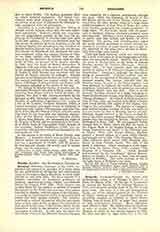

Brinkley, STEPHEN, Confessor of the Faith, imprisoned and tortured as manager of a secret press for the publication of devotional and controversial works in the reign of Queen Elizabeth; b. about 1550, and lost to view after 1585. He was a member of a Catholic association of unmarried gentlemen of property, organized by George Gilbert, and solemnly blessed by Gregory XIII, 1580. Their purpose was to raise funds for the support of priests, to prepare Protestants for the Faith, and, at a time when priests travelled in disguise, without papers of identification, to arrange for introductions which would guard both priests and laity against betrayal. The members undertook to content themselves with the bare necessaries of their state of life, to spend the remainder of their goods in the cause of the Church, and to devote themselves wholly to the salvation of souls and the conversion of heretics. At this time the Jesuit Fathers Robert Parsons and (Blessed) Edmund Campion were preparing for a vigorous propaganda through the press. With the assistance of several of the old Marian priests and of one Brooks, Parsons procured from the elder Brooks, owner of a large house called Greenstreet, at East Ham in Essex, five miles from London, permission for certain gentlemen to lodge there. To this house, chiefly with the assistance of Brinkley, Parsons conveyed a printing press and materials. Brinkley’s seven workmen appeared in public with fine clothes and horses, to avert suspicion. The parson and churchwardens urged the newly arrived gentlemen to attend services; an incautious purchase of paper almost gave a clue to the discovery of the press, and a servant of Brinkley’s was caught and racked.
Their first book, however, which was very probably a work of devotion or of encouragement to Catholics, was successfully issued. Brinkley then moved the press to Henley Park, to the house of Francis Browne, brother of Viscount Montague. Parsons issued, 1581, “A brief Censure upon two Books written in answer to M. Edmund Campion’s Offer of Disputation.” Campion’s challenge was then circulating in manuscript. Extreme caution was required in the management of Brinkley’s press. Government experts, like Norton, reported that the Brinkley books, in spite of the Douai imprint, had been produced in England; the landlord Brooks was suspicious; information as to the press was also asked of Father Briant upon the rack. After a second removal, Brinkley printed, at a lodge belonging to Dame Cecilia Stonor’s house, near Henley, Campion’s “Decem Rations”. At Oxford, on Commemoration Day, June 27, 1581, the benches of St. Mary’s Church were found strewn with copies of this ringing challenge to the universities. The capture of Campion near Oxford Sunday evening, July 16, was followed in a few weeks by that of Brinkley and his printers. Brinkley, though tortured in the Tower, escaped the fate of his fellow prisoner, William Carter, a Catholic printer, who was executed at Tyburn. Brinkley was discharged in June, 1583. He accompanied Father Parsons first to Rome, where we find his name in the Pilgrim Book of the English College in the following September, and thence in the following year to Rouen. Here, with George Flinton, Brinkley printed a second edition of a work which Flinton had brought out in 1581, “The Christian Directory”. After Flinton’s death about 1585, Brinkley continued to issue Catholic books. The date of his death is unknown. Gillow mentions a work translated from the Italian (Paris, 1579), entitled “The Exercise of a Christian Life … newly perused and corrected by the translatour” (James Sancer). Sancer, or Sanker, is known to have been the pseudonym of Brinkley. This work, perhaps, is one of the early issues of Brinkley’s own press.
J. VINCENT CROWNE

